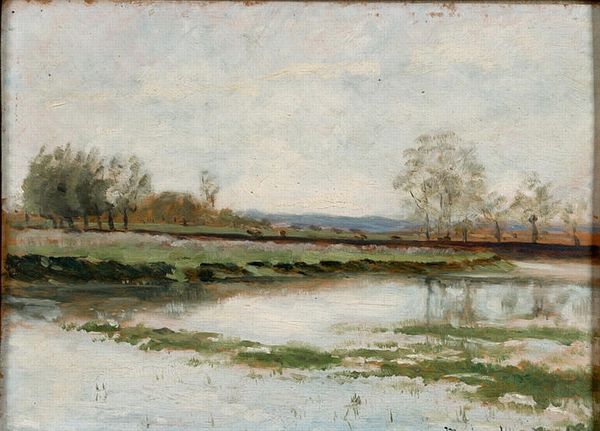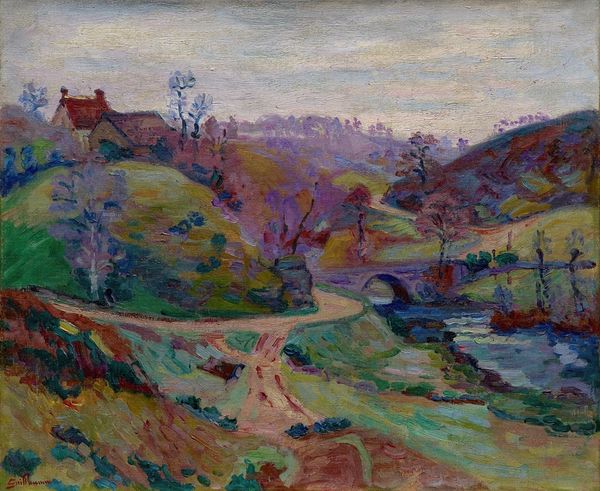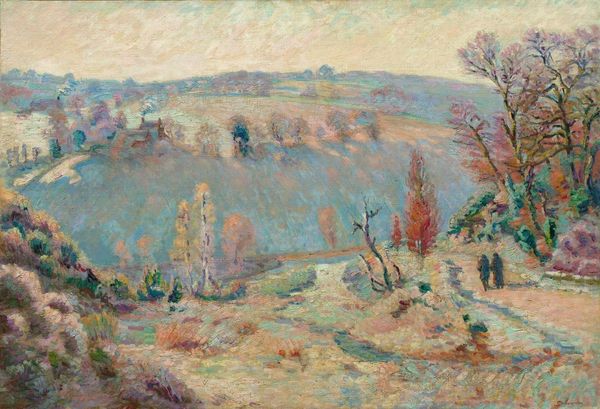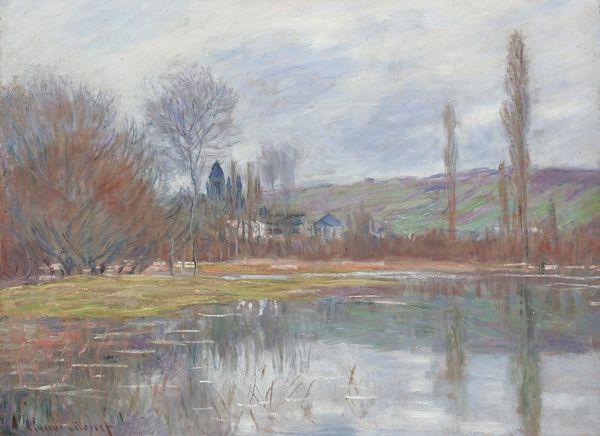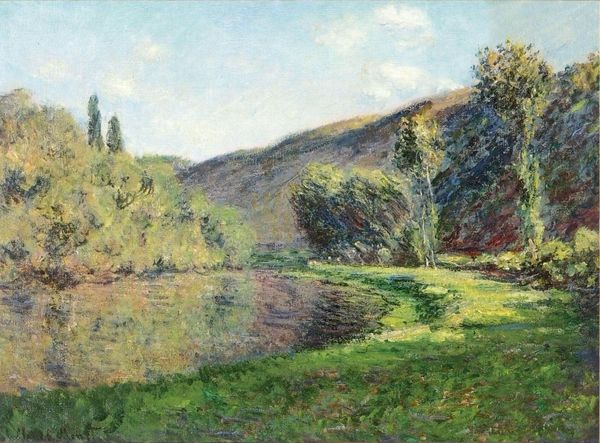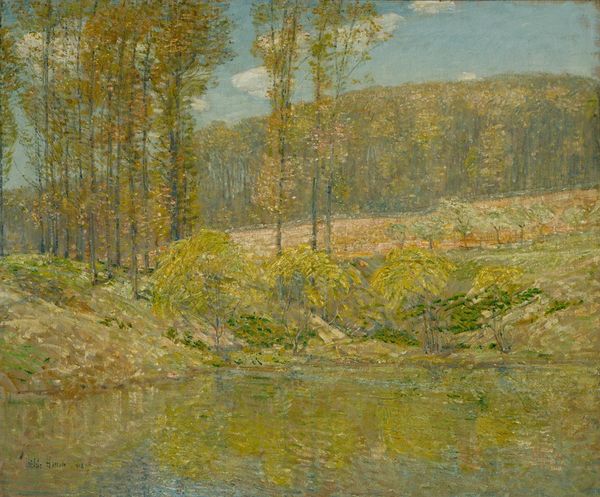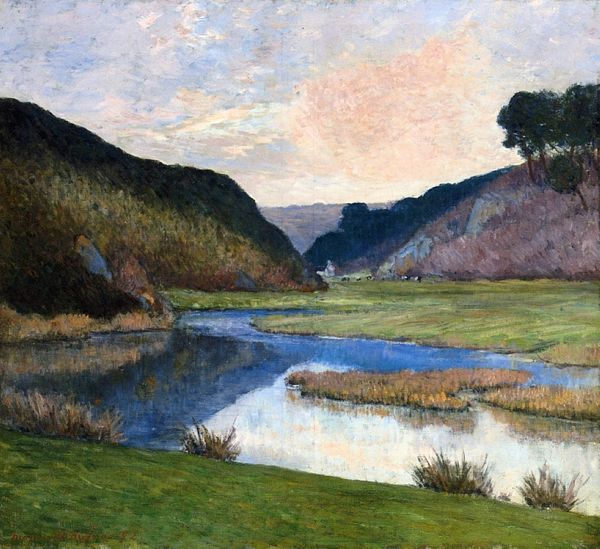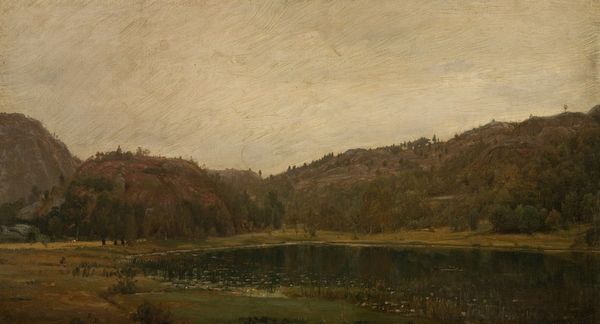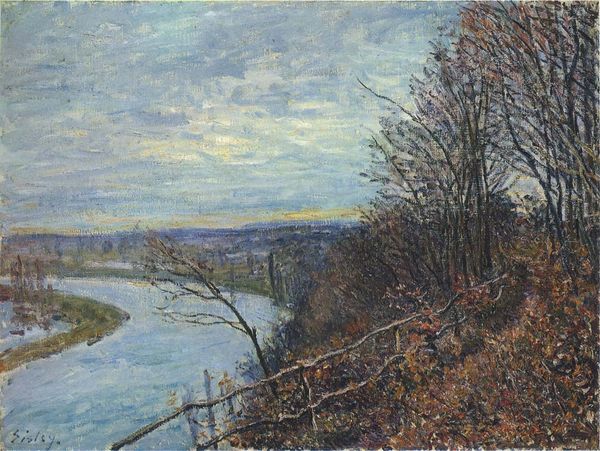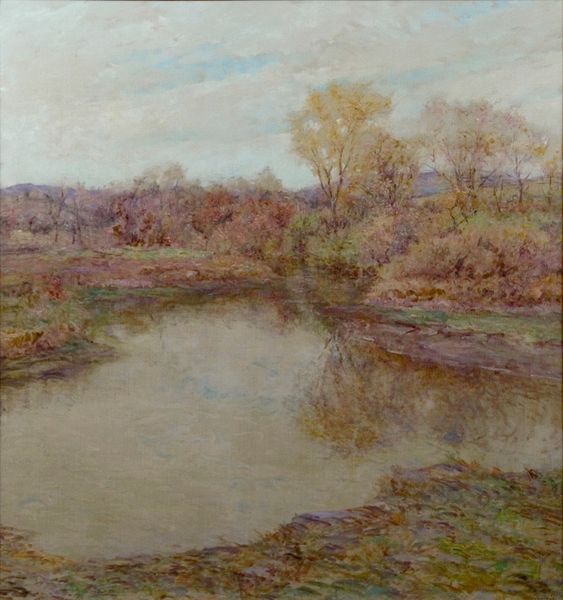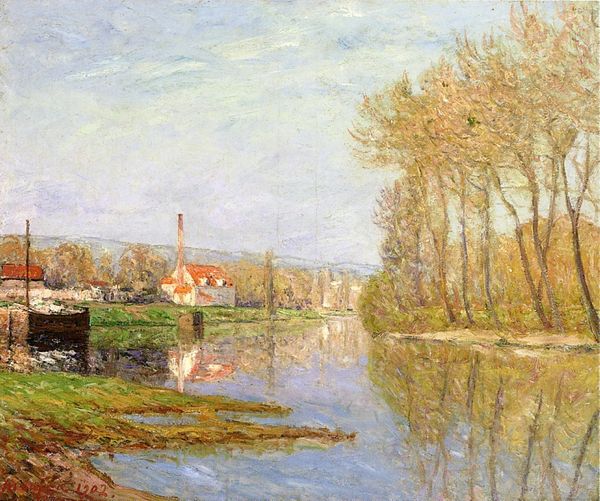
painting, oil-paint
#
painting
#
oil-paint
#
landscape
#
oil painting
#
symbolism
#
post-impressionism
Copyright: Public Domain: Artvee
Curator: Let’s take a look at Paul Gauguin’s “Brittany Landscape,” created in 1888 using oil paint. Editor: My first impression is muted. It feels melancholic; the colors, while varied, are blended into a soft, almost grey, overall tone. The visible brushstrokes lend it a handcrafted feeling that speaks to a particular time and place. Curator: Gauguin was deeply interested in expressing subjective experience through his art, moving beyond mere representation. Note how he's simplifying forms and using color less descriptively and more symbolically, aligning with the Symbolist movement. Do you see hints of spiritual searching here? Editor: Absolutely. Look at the layers – the painting’s surface feels built up deliberately, like sediment or compressed earth. The weight of the oil itself, combined with visible brushwork, shows both the physical effort, and also gives me clues about his process. He wasn’t hiding anything. Curator: Exactly! This reflects his broader move away from the impressionistic pursuit of fleeting moments. He embraced the idea of art as a vehicle for communicating profound ideas. This location of Brittany was a source of potent imagery, connecting with ideas of peasantry and spirituality that ran deeper than everyday experience. Editor: And yet it is just paint on canvas. We consume not only the final product but also something of the labor, even the consumption of material, that went into it. The scene is, after all, from a specific location that involved specific people. Curator: The artwork evokes a sense of timelessness, connecting with nature's cycles and inner emotional states, especially important considering the rapidly industrializing world during his time. It’s about what we remember when we imagine ‘landscape,’ rather than a record of a single view. Editor: Seeing it in person, you become even more aware of how tangible it is. Gauguin left such a material record here, imbuing the scene with its place, in his time and in ours. Curator: Indeed, this piece offers a lens to examine how emotional expression, cultural memory, and visual language intersect. Editor: A fitting synthesis of production, consumption, and experience, this “Brittany Landscape.”
Comments
No comments
Be the first to comment and join the conversation on the ultimate creative platform.
